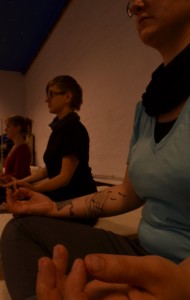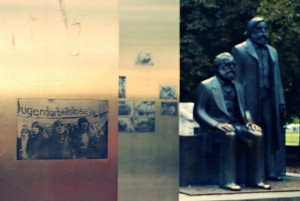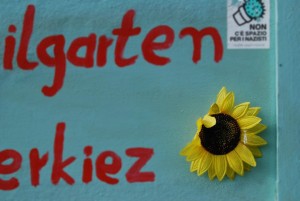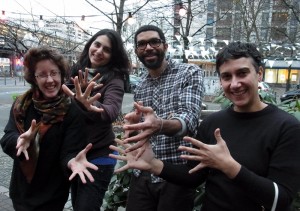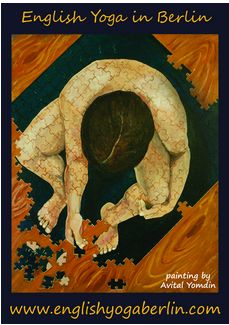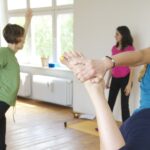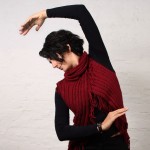Queer* Yoga Wednesdays started as a collaboration between Kanchi and Juli to bring two queer yoga classes together in one evening. We called it queer Wednesdays to prioritize a space for queer and trans* folk. Allies and other misfits are welcome.
As of May 2016, Kanchi returned to Freistil Yoga, and Juli continues to teach a Queer* Yoga Flow class on Wednesdays at the English Yoga Berlin, Görlitzer Str. 39, Kreuzberg Yoga Studio.
When: Wednesday at 10am-11:30am (10h – 11.30h) Queer* Yoga Flow
Prices: Community Class prices for low- / no-income folks, Regular prices for those who can afford it
Why “Queer” Yoga?
In western contemporary society, yoga classes can often feel excluding to those of us who are not middle-class, white, thin, flexible and cis-gendered. A common misconception is that if you don’t look like the person on the cover of a Yoga Journal, then you are probably doing yoga so that you can work towards that ‘ideal.’ For those of us who don’t, it can be discouraging to even attend a yoga class, knowing that we might be seen that way by others in the room.
When the room is filled with stereotypical “yoga-bodies” and unawareness of heterosexual and cis-sexual privilege, it can make some queer and trans* people feel uncomfortable and unable to focus on their own practice. And often the language used in mainstream yoga classes can be very hetero- and cis-sexist. As queer yoga teachers, we can take the first step in making the space (and the practice) more queer and trans* friendly.
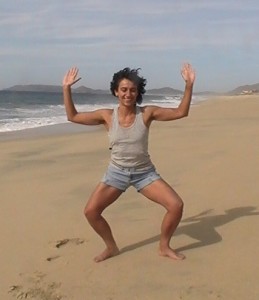
Juli teaches Vinyasa Flow
Vinyasa Flow Yoga
Vinyasa Yoga is about breath-synchronized flowing movement. This particular class focuses on strength building and promoting awareness of one’s own ability at the present moment to move comfortably and freely while carrying one’s own weight. This class is open to both beginners and experienced students, as well as those with injuries, chronic pain or limited mobility, as options and modifications for poses are offered by the teacher. Read more about Juli.
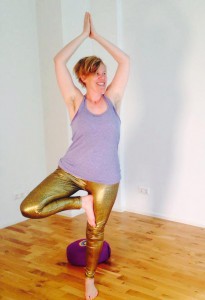
Kanchi teaches Body Positive Yoga
Body Positive Yoga
This class is for all shapes sizes genders and ability levels, including beginners. Kanchi took up the practice of yoga almost 20 years ago and found that the physical practice and the philosophies allowed her to develop a positive connection with her body and healthier approach to dealing with emotional challenges. She completed her 200 hours training in Feb 2015 and her yoga for all 25 hours training in July 2015. She specialises in working with queer, trans and bigger bodies, but her classes are open to anyone who wants to develop a more positive and healthy connection with their body (and therefore themselves).





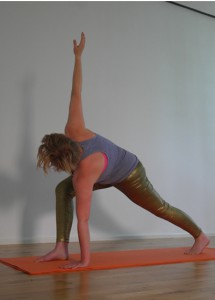 This Sunday,
This Sunday,  subtle life force
subtle life force